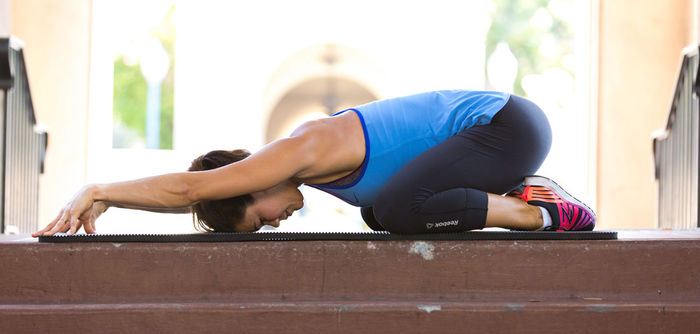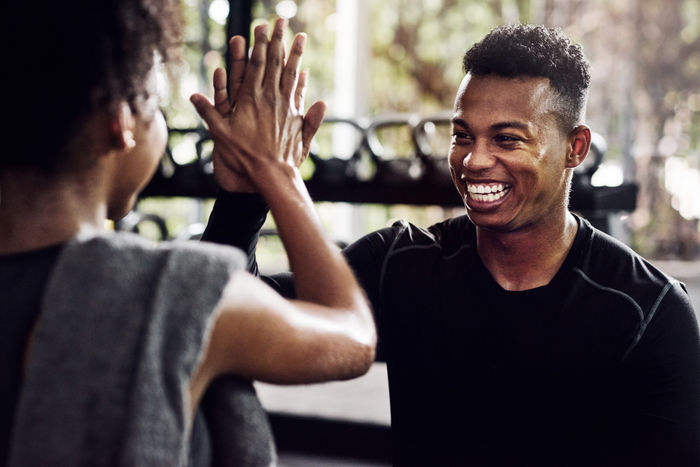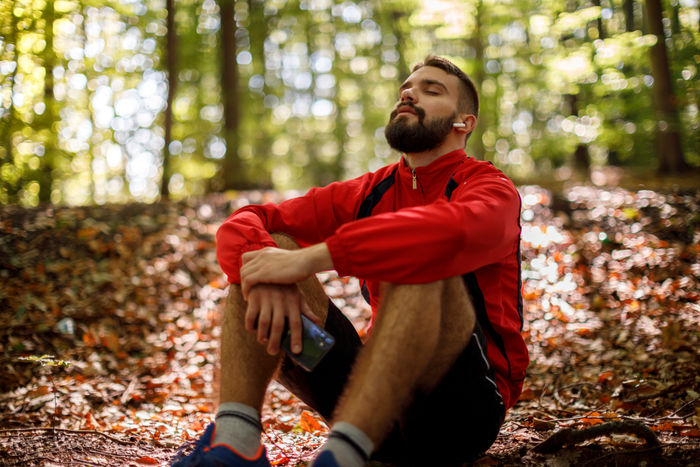Last Updated October 27, 2023 (originally published September 17, 2015)
Desk jobs, driving, swimming and carrying boxes all have one thing in common: the use of the arms and chest to perform the task. A large percentage of what we do in life is in front of us, making it common for the muscles in the front of our body to become hypertonic (i.e., shortened) and limiting chest, shoulder and arm flexibility.?
The pectoralis major and minor, anterior deltoid and biceps are all muscles located on the front of the body (in the chest, shoulders and arms, respectively). Tight pectoral muscles contribute to a postural deviation known as forward-rounded shoulders and limit range of motion in the shoulder joint. Opening up the front of the body through a variety of chest stretches can increase flexibility of the chest muscles and connective tissue and allow for greater range of motion in the shoulders to improve upper-body posture and allow for pain-free movement patterns.
5 Variations of Chest Stretches
The following chest stretches provide various ways to enhance upper-body flexibility and can be performed any time—not just after a workout. Executed regularly, these stretches will cause you to see and feel continual improvements in chest and shoulder flexibility and range of motion.
-
Hold each stretch for 10 to 30 seconds or two to five breath cycles. One inhale + one exhale = 1 breath cycle.
-
Avoid bouncing. With each exhale, move into the stretch a little further, but only to the point of feeling tightness or slight discomfort—never pain.
-
Perform each stretch two to four times.
-
Bring focus to pulling the shoulder blades down and back, while also lifting and pointing your chest forward to create length within the pectoral muscles.
Behind-the-back Elbow-to-elbow Grip
Because this stretch is easy to perform anywhere and no equipment is needed, it’s a great way to stretch anytime of the day.
-
Seated or standing, begin with arms hanging by your sides and shoulders pressed down away from your ears.
-
Gently squeeze your shoulder blades together and broaden the chest. Bring the arms behind the back and grip elbow to elbow.
Above-the-head Chest Stretch
This is another stretch that can be performed either seated or standing. Play around with the positioning of the hands to emphasize the shoulders and/or chest.
-
Seated or standing, bend your elbows and interlock your fingers behind your head.
-
Gently squeeze your shoulder blades together and move your elbows backward.
-
Vary the height of your hands to emphasize the shoulders and/or chest (hands behind the head, hands on top of the head, hands a few inches above the head).
Bent-arm Wall Stretch
This exercise allows you to stretch each side of your chest separately.?
-
Assume a split stance, right leg in the front and left leg in the back, at the end of a wall or in a doorway.
-
Bring the left arm up to shoulder height and position the palm and inside of the arm on the wall surface or doorway. Your elbow should be bent to 90 degrees.
-
Gently press the chest through the open space to feel the stretch.
-
Moving the arm higher or lower will allow you to stretch various sections of the chest.
-
Repeat on the other side.
Extended Child’s Pose on Fingertips
In yoga, child’s pose is considered a resting exercise, but when the arms are extended, this exercise stretches the upper body while still providing stress relief to the low back.
-
Kneel on the floor. Touch your big toes together and sit back onto your heels. Next, separate your knees about as wide as your hips.
-
Bend forward from the hips and walk your hands out as far in front of you as possible. With the arms extended and palms facing down, come up onto the fingertips as if you have a ball underneath your palms and melt the chest toward the floor.
Side-lying Parallel Arm Chest Stretch
This exercise allows you to target each side of the chest separately and give special attention to the shoulders.
-
Lying prone on your stomach, bring both arms out to the sides, palms facing down, to create the letter T.
-
Start to roll onto your right side by pushing yourself with your left hand. Lift the left leg, bend the knee and place the left foot behind you on the floor for stability. Rest your right temple on the floor.
-
Keep the left hand on the floor for balance. For an extra stretch, lift the left hand up toward the ceiling.
-
Repeat on the other side.




 by
by 







 by
by